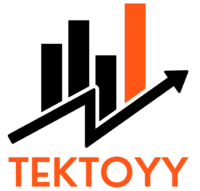Navigating the world of insurance can feel like learning a new language. With terms like premiums, deductibles, and liability floating around, it’s easy to get overwhelmed. Yet, understanding these financial shields is one of the most critical steps you can take toward securing your financial well-being. Insurance is more than just a monthly bill; it’s a foundational pillar of a sound financial plan, protecting you and your loved ones from the devastating economic impact of the unexpected.
This guide will demystify the four core types of personal insurance: life, health, automobile, and residential. We will break down what each policy covers, why it’s essential, and who needs it most. By the end of this article, you will not only grasp the fundamental differences between these coverages but also understand how they work together to create a comprehensive safety net for your assets and your future. We will delve into the specifics, explore ways to enhance your coverage, and provide the clarity needed to make informed decisions for yourself and your family.
The Ultimate Protector: What is Life Insurance and Why Does It Matter?

Life insurance stands apart from other types of insurance because it’s not for you—it’s for the people you leave behind. It is a contract between you and an insurer that guarantees a tax-free, lump-sum payment, known as a death benefit, to your designated beneficiaries upon your passing. Its primary purpose is to replace lost income and provide financial security for your dependents, ensuring they can maintain their standard of living, pay off debts, and fund future goals without your financial support.
Think of it as a financial backstop for your family. If you have a spouse, children, or even aging parents who rely on your income, life insurance ensures that a mortgage can still be paid, college tuition can be funded, and daily living expenses can be met. Even for those without dependents, a smaller policy can cover final expenses like funeral costs and outstanding medical bills, preventing that burden from falling on relatives.
Term vs. Permanent Life Insurance: Choosing Your Coverage Timeline
The most significant decision you’ll make when buying life insurance is choosing between term and permanent coverage.
- Term Life Insurance: This is the simplest and most affordable form of life insurance. It covers you for a specific period or “term,” typically 10, 20, or 30 years. If you pass away during this term, your beneficiaries receive the death benefit. If the term expires and you are still living, the coverage ends, and no benefit is paid. Term life is an excellent choice for covering specific financial obligations with a clear endpoint, such as a mortgage or the years until your children are financially independent.
- Permanent Life Insurance: As the name suggests, this type of insurance provides coverage for your entire life, as long as premiums are paid. It is significantly more expensive than term life because it includes a cash value component that grows over time on a tax-deferred basis. This cash value acts as a savings or investment vehicle that you can borrow against or withdraw from during your lifetime. Whole life and universal life are the two most common types of permanent insurance, offering lifelong protection and a wealth-building component.
Guarding Your Well-being: How Does Health Insurance Actually Work?

Health insurance is arguably the most complex but most frequently used type of personal insurance in the United States. It is a contract that requires an insurer to pay some or all of a person’s healthcare costs in exchange for a monthly premium. Without it, a sudden illness or serious accident could lead to medical bills substantial enough to cause bankruptcy. From routine check-ups and prescription drugs to emergency surgeries and hospital stays, health insurance makes medical care affordable and accessible.
Understanding the key terms is the first step to mastering your health plan:
- Premium: The fixed amount you pay each month to keep your policy active.
- Deductible: The amount you must pay out-of-pocket for covered services before your insurance plan starts to pay.
- Copayment (Copay): A fixed amount you pay for a covered health care service after you’ve paid your deductible (e.g., $25 for a doctor’s visit).
- Coinsurance: The percentage of costs of a covered health care service you pay after you’ve met your deductible (e.g., your plan pays 80%, you pay 20%).
- Out-of-Pocket Maximum: The most you have to pay for covered services in a plan year. After you spend this amount on deductibles, copayments, and coinsurance, your health plan pays 100% of the costs of covered benefits.
Navigating the Network: HMO vs. PPO Plans Explained
Most health insurance plans are structured around a network of doctors, hospitals, and other healthcare providers. The two most common plan types are Health Maintenance Organizations (HMOs) and Preferred Provider Organizations (PPOs).
- HMO (Health Maintenance Organization): HMO plans typically have lower premiums and require you to use doctors, hospitals, and specialists within their network. To see a specialist, you generally need a referral from your Primary Care Physician (PCP). Care received from an out-of-network provider is usually not covered, except in true emergencies.
- PPO (Preferred Provider Organization): PPO plans offer more flexibility. You can see both in-network and out-of-network providers without a referral. However, your out-of-pocket costs will be significantly lower if you stay within the plan’s “preferred” network. Premiums for PPOs are generally higher than for HMOs, reflecting this greater freedom of choice.
On the Move with Confidence: Why Auto Insurance is Non-Negotiable

Auto insurance is a mandatory requirement in nearly every state, and for a good reason. It protects you financially if you are involved in a car accident. A policy is a package of different coverages that, together, shield you from the potentially crippling costs associated with vehicle damage, property damage, and medical expenses for injuries to yourself or others. Without it, you would be personally responsible for these costs, which can easily run into the tens or even hundreds of thousands of dollars.
A standard auto policy is comprised of several key components:
- Liability Coverage: This is the cornerstone of any auto policy and is required by law. It pays for bodily injury and property damage that you cause to other people in an at-fault accident.
- Collision Coverage: This covers the cost of repairing or replacing your own car after an accident, regardless of who is at fault.
- Comprehensive Coverage: This protects your car from damage not caused by a collision, such as theft, vandalism, fire, falling objects, or natural disasters like hail.
- Uninsured/Underinsured Motorist Coverage: This protects you if you are hit by a driver who has no insurance or not enough insurance to cover your medical bills and vehicle repairs.
- Medical Payments Coverage (MedPay) / Personal Injury Protection (PIP): This covers medical expenses for you and your passengers after an accident, regardless of fault.
Understanding Your Financial Responsibility: Deductibles in Auto Insurance
When you purchase collision and comprehensive coverage, you will select a deductible. This is the amount of money you agree to pay out-of-pocket for a claim before your insurance company pays the rest. For example, if you have a $500 deductible and your car sustains $3,000 in damage, you would pay the first $500, and your insurer would cover the remaining $2,500. Choosing a higher deductible will lower your monthly premium, but it means you’ll have a greater financial responsibility in the event of a claim.
Protecting Your Biggest Investment: The Essentials of Homeowners Insurance
For most people, their home is their most valuable asset. Homeowners insurance (or renters insurance for tenants) is designed to protect this investment and your personal belongings from unexpected events. It is a package policy that covers both damage to your property and your liability for any injuries and property damage you or members of your family cause to other people. If you have a mortgage, your lender will almost certainly require you to have homeowners insurance.
A standard homeowners policy provides four essential types of coverage:
- Dwelling Coverage: Protects the physical structure of your house (walls, roof, floors) against damage from perils like fire, windstorms, or hail.
- Personal Property Coverage: Covers your belongings, including furniture, clothing, and electronics, if they are stolen or destroyed by an insured disaster.
- Liability Protection: This covers you against lawsuits for bodily injury or property damage that you or your family members cause to other people. It includes the cost of defending you in court and any court awards, up to the limit of your policy.
- Additional Living Expenses (ALE) Coverage: This pays for the costs of living away from home—such as hotel bills or rent—if you cannot live in your house due to damage from an insured disaster.
Advanced Protection: Taking Your Insurance Strategy to the Next Level

Once you have the four foundational policies in place, you can consider more advanced strategies to create a truly ironclad financial safety net. These options provide an extra layer of security that can be invaluable in specific situations.
The Ultimate Safety Net: Understanding Personal Umbrella Policies
A personal umbrella policy is extra liability insurance. It is designed to kick in when you reach the liability limits on your underlying home or auto policies. Imagine you cause a major car accident resulting in $700,000 in medical bills and damages. If your auto policy has a liability limit of $300,000, you would be personally responsible for the remaining $400,000. An umbrella policy could cover that excess amount, protecting your savings, investments, and future earnings from being seized in a lawsuit. These policies are surprisingly affordable and are a crucial tool for anyone with significant assets to protect.
Customizing Your Coverage: The Power of Riders and Endorsements
An insurance rider, or endorsement, is an add-on to a standard policy that provides additional, specialized coverage. For example, a standard homeowners policy may have limited coverage for valuables like jewelry or fine art. A “scheduled personal property” rider allows you to insure these items for their full appraised value. Similarly, you might add a “water backup” endorsement to your home policy to cover damage from a failed sump pump, which is often excluded from standard coverage. Riders allow you to tailor your insurance to your unique needs.
A Unified Defense: The Strategic Advantages of Bundling and Regular Reviews

Managing your insurance policies doesn’t have to be a scattered, complex process. Strategic decisions about how you purchase and review your coverage can lead to significant savings and peace of mind.
The Pros and Cons of Bundling Your Insurance Policies
Bundling means purchasing multiple insurance policies, such as home and auto, from the same company. The primary advantage is a significant discount, often ranging from 5% to 25%. It also simplifies your financial life, giving you one point of contact, one bill, and one renewal date to manage. However, bundling isn’t always the best option. Sometimes, you can find a lower overall price by cherry-picking the best rates for each individual policy from different insurers. It’s always wise to compare the bundled price against individual quotes to ensure you’re getting the best deal.
Why Your Insurance Needs Evolve: The Importance of a Yearly Review
Insurance is not a “set it and forget it” product. Your needs change as your life evolves. Getting married, buying a home, having a child, or getting a promotion are all life events that should trigger an immediate review of your coverage. As a young single adult, a small life insurance policy might suffice. But as a parent and homeowner, your need for life, home, and liability protection increases dramatically. Make it a habit to conduct an annual insurance review with your agent or broker to ensure your coverage levels are still adequate, that you’re getting all eligible discounts, and that your policies align with your current financial situation and future goals. This proactive approach ensures your financial shield remains strong and effective throughout every stage of your life.







